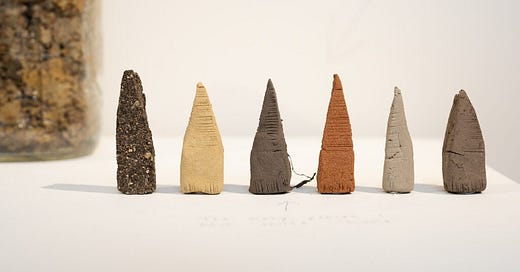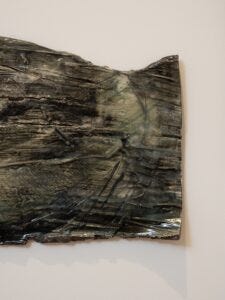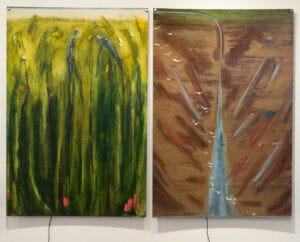Josh Anderson: I was raised on Dust Bowl stories.
My grandmother told stories of growing up in Chandler, Oklahoma, until her family was displaced to the fruit plantations of California, where her father became a Baptist preacher, famous for his apocalyptic sermons that he delivered under the shade of orange trees.
In her diary, Grandma Velma described Dust Bowl economics. Later, every Christmas, Grandma packed oranges into our stockings.
A good orange is hard to find in North Dakota. But every winter I seek one out, because oranges are heirlooms of my grandmother’s survival.
Grandma’s Dust Bowl stories returned to me this winter in northeastern North Dakota, where I work for the Walsh County soil conservation district.
The stories have me reconsidering the definition of “dirt poor.”
Dirt poor came into common use in 1937. The term means “suffering extreme poverty,” but I contend that it can better serve us as a question. What happens to a farming and ranching community when it becomes dirt poor, with depleted and impoverished soil?
Austen Camille: A poem.
We are shaped by our landscapes / we shape our landscapes:
As I learn how to read the landscape here, I can see that
The Chesapeake Bay is a drowned river valley.
Drowned by prehistoric glacier melt, at a much earlier time when the world was
warming. Similar to and very different from
right now.
The Susquehanna River had carved a deep channel down the middle, and formed
silty floodplains at its edges: the yielding land that this town is built upon.
I am waiting for T in the coffee shop, most of the tables around me full of older men in
dark blue coveralls. Everyone is talking about the weather, its changes, the unusual
patterns of heavy rain, too much clay in the soil or too much sand,
addictions in the family, the Lord, the price of fertilizer, the funeral they’d all gone to last
week,
and while there is very little said about how anyone feels about anything, there is
a deep sensation of what I would call care:
a holding of one another’s
overwhelming difficulties.
I am unsure of how these two things relate exactly (the geologic history of the Bay and the way
these men talk to one another), but it feels like they do. We are shaped by our landscapes / we
shape our landscapes. These conversations and relationships are facilitated by the weather, by a
shared working of the land:
The shape of this peninsula has changed dramatically since the land was cleared for
agriculture,
since the soft floodplain soil began eroding into the waterways and the sandy
sediment filled up previously navigable rivers,
since certain cliffs became beaches – created and now covered up again as the
sea level rises. We are shaped by our landscapes / we shape our landscapes.
One man’s voice in particular carries over the chatter:
I’m not sure how much longer we can do this for.
*
I am curious about this: How, in our current work, do our landscapes shape us, how have we shaped our landscapes?
Anderson: The Red River Valley here was bulldozed flat by the glaciers during the last ice age.
It’s so flat that the joke here is that you can watch your dog run away for two weeks. After the glaciers, the land was a diverse tallgrass prairie that could support thousands of species of insects, migratory and grassland birds, and Dakota and Anishinaabe peoples. In the last 100 years, the land has become mostly industrialized monocrop agriculture.
Lately there’s been no snowpack, with lots of soil blowing away. It looks like The Grapes of Wrath. Since Rachel Carson published Silent Spring in 1962, my home county has lost 50 percent of its topsoil. In that same span of time, our county, which is bigger than Rhode Island, went from 18,000 residents to 10,000, also a loss of almost 50 percent.
My grandfather was born in 1916 in a barn in this county.
But even in my lifetime, I’ve seen dramatic changes. There have been school consolidations, and all the things that come with the loss of tax base.
A tragic irony is that I’m surrounded by agricultural land, but 45 percent of rural North Dakotans live in a food desert. There is almost no local food, no local agriculture, only commodity cash crops.
I want to ask you the same question. How is region inflected in your work and why do you hold that to be so important?
Camille: I’m on the Eastern Shore of Maryland now — but it’s not my home. It’s not soil that I’m familiar with, like the soil where my family is, in South Texas.
I’m here learning the soil by way of other people’s stories, gathering their understanding of this soil, this place.
But there has not been a lot of topsoil here since before the 1600s. When the colonists came, this was one of the first places in America that was completely deforested. No one is quite sure what the native plants are, what those ecosystems looked like. They no longer exist.
The farmers are trying to build their topsoil. Cover crops are a big deal. People are envious of the soils in the Great Plains.
And, the Chesapeake Bay is this huge looming figure, economically and environmentally. There’s been a lot of work to protect the Bay, to stop soil from running into it.
Anderson: You’re a working artist. I’m curious what perspective you bring as an artist to soil.
Camille: Art is good at amplifying. It’s a good tool for noticing, a tool for getting closer. The thing that is created can be beautiful and interesting in and of itself, but in reality it doesn’t stand on its own. It exists in the world.
It takes time to create something. You’re saying, “This thing that the art is about, it’s worth the time that it took to create. It’s worth the noticing.”
It’s true especially when it comes to a subject like soil, which in the English language can be traced to worthless, dirty, soiled. I try to flip this. I want to create art about soil. If I think it is worth noticing, maybe other people will as well.
And I’d love to hear what perspective you feel a writer brings to the conversation around soil.
Anderson: Thank you. I’ll tell a story. Today is 27 years to the day that my dad was diagnosed with MS. I was 13 years old, in the house where I am now.
I’m here working on soil, but also as an in-home caregiver to my father.
I promised him that I would become a doctor someday and find the cure to MS. The joke is that I did get a Ph.D., but in English.
But it’s not a cure model that I’m learning from soil, nor from working with my dad. It’s the importance of care — which is about relationship.
Early in my life, I didn’t think about soil. I worked as a farmhand, a ranch hand, a bulldozer operator, a truck driver. I returned here with a limited knowledge about soil and how incredible it is.
It’s not just dirt.
It’s a living ecosystem. One spoonful of living soil can contain more microbes than there are human beings on earth. It’s thrumming with life.
Now I’m thinking about how storytelling can be an avenue toward care of soil.
Down the road from my office is a place that I grew up calling the Ax House.
It’s actually the Alexander House, named after Alexander Henry, a contemporary of Lewis and Clark. He would climb an oak tree, look out on the land and describe it in his journal.
It was a landscape filled with grass. Tall grass, tall as a man on horseback and bison, as far as the eye could see, and elk and bear. Tall grass was here a lot longer than what we have today.
Storytelling and research often delve into history, and living roots. And living roots is one of the principles of soil health.
Soil is so vast. There’s so much to learn. I’ll never learn it all.
This conversation is an excerpt from a longer piece published in The Blazing Star Journal on the AgArts website. Access the full article here:
Austen Camille
Austen Camille is Canadian-American multidisciplinary artist, writer, builder and gardener. Camille primarily makes site-responsive public work that aims to facilitate relationships with local environments. Camille received their MFA in Painting from the Tyler School of Art and Architecture (Temple University) in 2020.
Camille’s website is www.austencamille.com.
Josh Anderson
Joshua T. Anderson, formerly a professor of literature and writing in New England, now leads conservation efforts in Walsh County, North Dakota. He runs outreach programs focused on re-storying our relationships with land and hosts Common Ground: A Prairie Podcast. His writing has appeared or is forthcoming in North American Review, Earth Island Journal, Open Space, Essay Daily, and Sonora Review.
Anderson can be reached at josh@walshcounty1938.com.
Mary Swander’s Emerging Voices is pleased to be a member of the Iowa Writers Collaborative. Sample the work of my colleagues through our Sunday Round-Up and Wednesday Flipside.









The depletion of soil is an ongoing problem of erosion by wind and rain. My dad practiced many good farming practices, contour terraces , buffer strips, crop rotation of corn, beans, oats, alfalfa and grassy waterways. But the pressure to grow more corn and beans led to some of his principles being compromised. Some of the waterways got plowed up, and drainage tiles added to gain more cropland. He did no till most years but there was always the wind. The loss of soil could be seen every winter in the black snow drifts in the roadside ditches. To get a feeling for the hardships of the dust bowl years read the great book by Tim Egan, "The Worst Hard Time: The Untold Story of Those Who Survived the Great American Dust Bowl."
Thank you both for digging deep in this moving conversation.